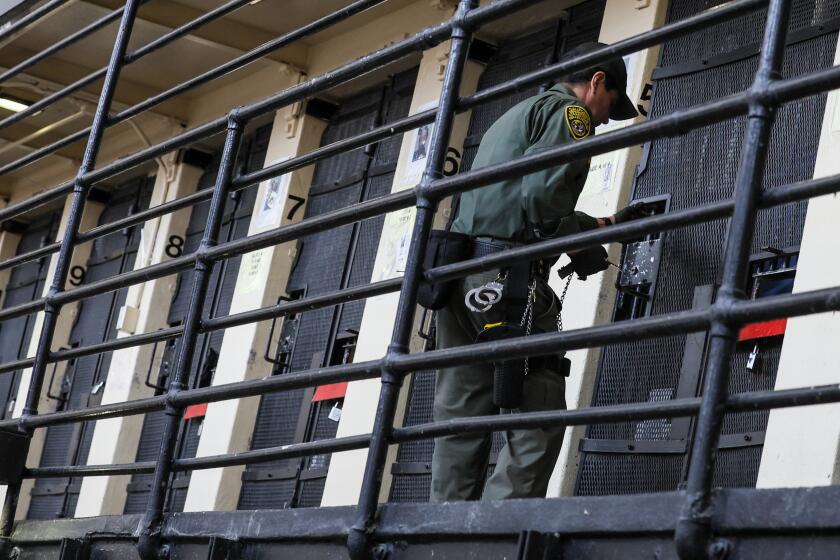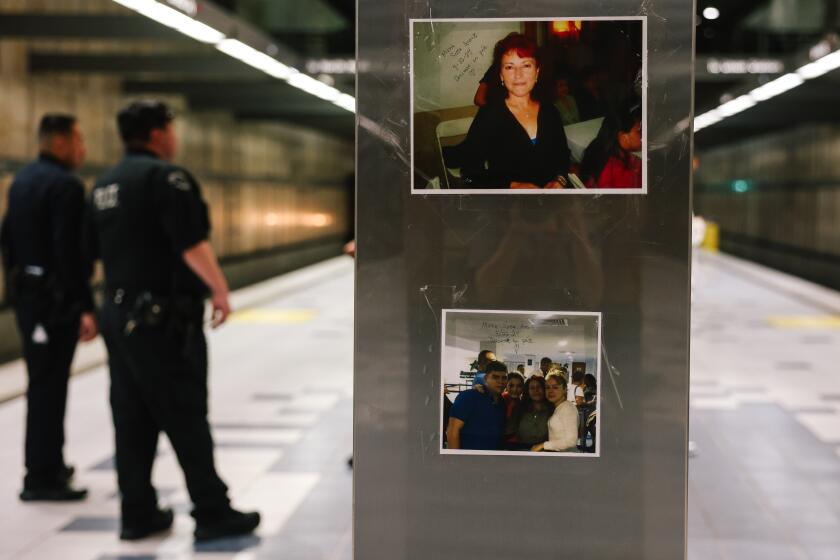Prop. 9’s many victims
For more than two decades, California voters have approved by overwhelming margins pretty much any tough-on-crime initiative put before them. Operating on the mistaken premise that a generation of leniency had made the state a playground for killers, and reacting to the anger of heartbroken families of the latest high-profile crime victims, voters have opted for any ballot measure that would lock up more wrongdoers and throw away the key.
One of the results has been penal institutions that are so overcrowded and treat inmates so poorly that they have been found to violate the constitutional prohibition against cruel and unusual punishment.
So it is noteworthy and encouraging that voters in Tuesday’s election said no to the latest overreaching criminal justice initiative. Proposition 6, seductively titled the Safe Neighborhoods Act, would have added new spending mandates, locking up yet another chunk of the state budget for programs that appeal to the punitive portion of Californians’ nature but do nothing to make people safer.
Is this the end? Does the defeat of Proposition 6 demonstrate that voters finally have come of age and will no longer fall for any ballot measure that preys on fear and outrage?
Sadly, no. On the same day they rejected Proposition 6, voters embraced Proposition 9, the so-called Victims’ Bill of Rights Act of 2008, also known as Marsy’s Law. It had all the old ingredients: an emotionally powerful story, a billionaire funder, assertions that the criminal justice system is outrageously tilted toward the defense. It seems not to have made a difference that the rich backer is under criminal indictment. Voters seem to have forgotten that they previously approved a victims’ bill of rights, and that the Legislature periodically passes laws under the same heading. The title may make us feel safer -- but the problems lie in the substance.
By revoking the chance at a parole hearing for as much as 15 years, Proposition 9 invites constitutional challenge. By layering new requirements on prosecutors to notify the families of crime victims at every stage of proceedings, it may create huge new public liability. It replaces a system run by impartial prosecutors, judges and juries with a system that places those with a desire for vengeance in the position of dispensing justice.
Resources better spent on prosecuting criminals will instead be devoted to challenging and defending these newly created rights, many of which prosecutors and defense lawyers predict will be found unconstitutional or at least unenforceable in any meaningful way. In an internal report, the Los Angeles district attorney’s office predicts “significant litigation on virtually every aspect of this initiative being filed.”
When will we ever learn?
More to Read
A cure for the common opinion
Get thought-provoking perspectives with our weekly newsletter.
You may occasionally receive promotional content from the Los Angeles Times.






